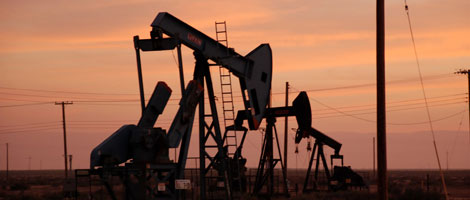The earnings reports from U.S. oil shale producers are painting a very uniform picture so far: Production was up in the second quarter; capital spending budgets will be reduced for the remainder of 2017; and despite those capital spending cuts production is expected to continue to rise.
That consensus is obviously not good for global oil prices since it means more U.S. oil flowing onto a world market that is trying to reduce a supply surplus. It’s obviously not good for those companies that make their money from drilling rigs and drilling supplies such as the sand used in fracking. It looks to be a bit better than okay for those U.S. producers who can thread the needle of raising production to counter lower oil prices while at the same time cutting spending on drilling and production.
Here’s a sample of what U.S. oil shale producers have said so far in earnings season:
Pioneer Natural Resources (PXD) reported earnings of 21 cents a share, 10 cents a share better than Wall Street estimates. The company also beat on revenue, reporting 107% year over year revenue growth at $1.63 billion for the quarter versus the $1.06 billion analyst estimate. Quarterly production was up 4% from the first quarter of 2017. Production costs, excluding taxes fell to $6.19 a barrel from $6.79 a barrel in the second quarter of 2016. But for 2017 as a whole Pioneer is expecting production growth of 15% to 16%, at the low end of the company’s forecast of 15% to 18% growth and Pioneer expects production costs to average $7.75 to $9.75 for the rest of 2017. Pioneer also expects to cut its capital spending program for 2017 by $100 million to $2.7 billion.
Devon Energy (DVN) reported earnings of 80 cents a share, 47 cents a share above the Wall Street consensus. Revenue climbed 31.6% year over year. Devon projects that U.S. production will end 2017 30% above the level of the end of 2016. And the company expects capital spending to range from $1.9 billion to $2.2 billion in 2017, $100 million below previous guidance.
Daimondback Energy (FANG) reported second quarter earnings of $1.25 a share (after excluding one-time items), 27 cents a share above the Wall Street consensus. Revenue climbed 137.7% year over year to $267 million versus the $259 million Wall Street projection. Operating costs in the second quarter were $7.66 a barrel. The company increased its 2017 production guidance by 5%. And it lowered its 2017 capital spending plan to a range of $800 to $950 million from the previous guidance of $800 million to $1 billion.
Chesapeake Energy (CHK) reported second quarter earnings of 18 cents a share, 3 cents a share better than Wall Street had projected. Revenue $2.28 billion, a year over year increase of 40.6%, pummeled the Wall Street estimate of $1.07 billion for the quarter. For all of 2017 Chesapeake sees production growing by 0% to 4%. And the company reduced its capital spending plan to 14 rigs working at the end of 2017 from 18 working today. Oil production (Chesapeake is primarily a natural gas producer) rose to a peak rate of 90,400 barrels a day in July and the company told analysts that the annual goal of 100,000 barrels of oil a day remains on track.


